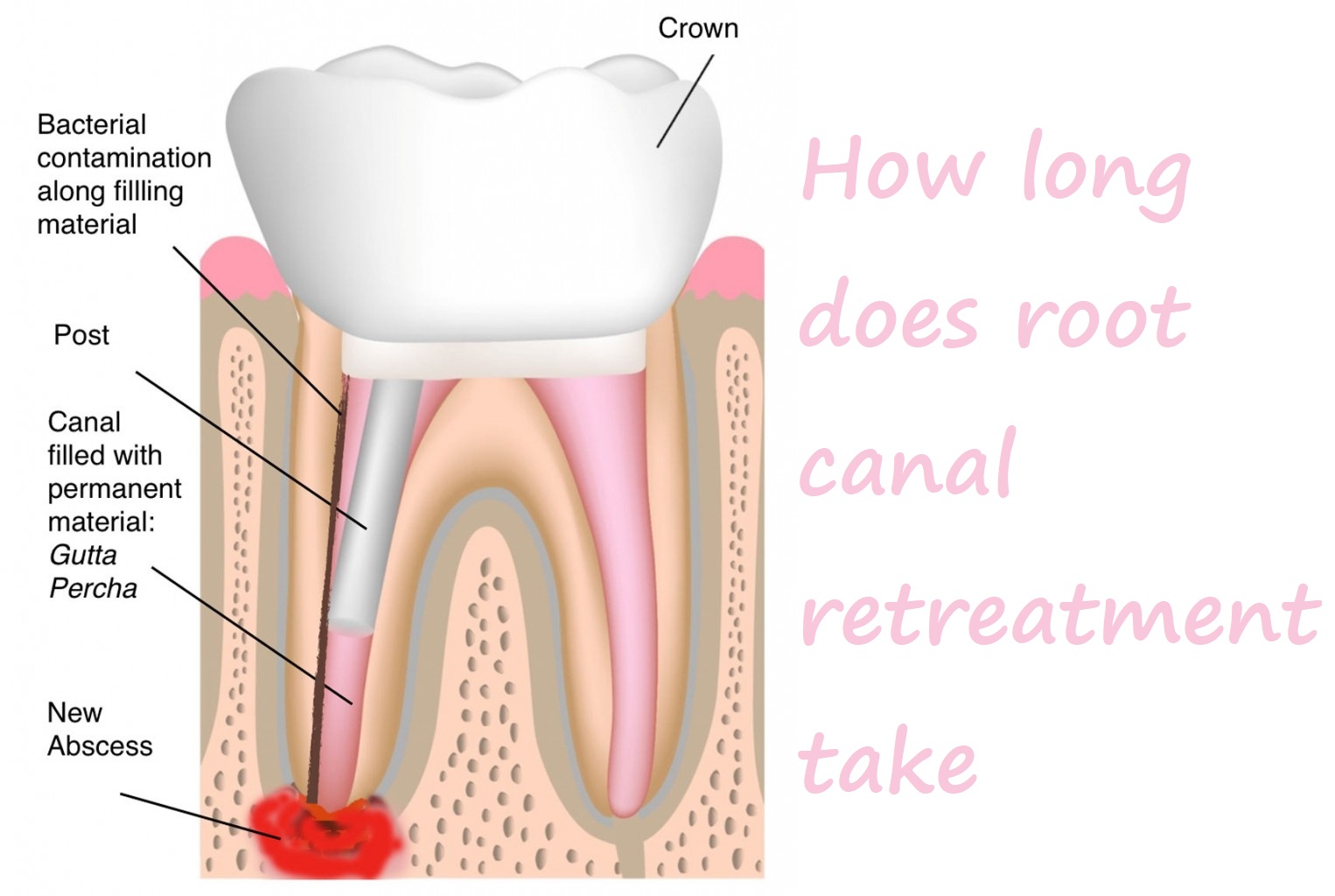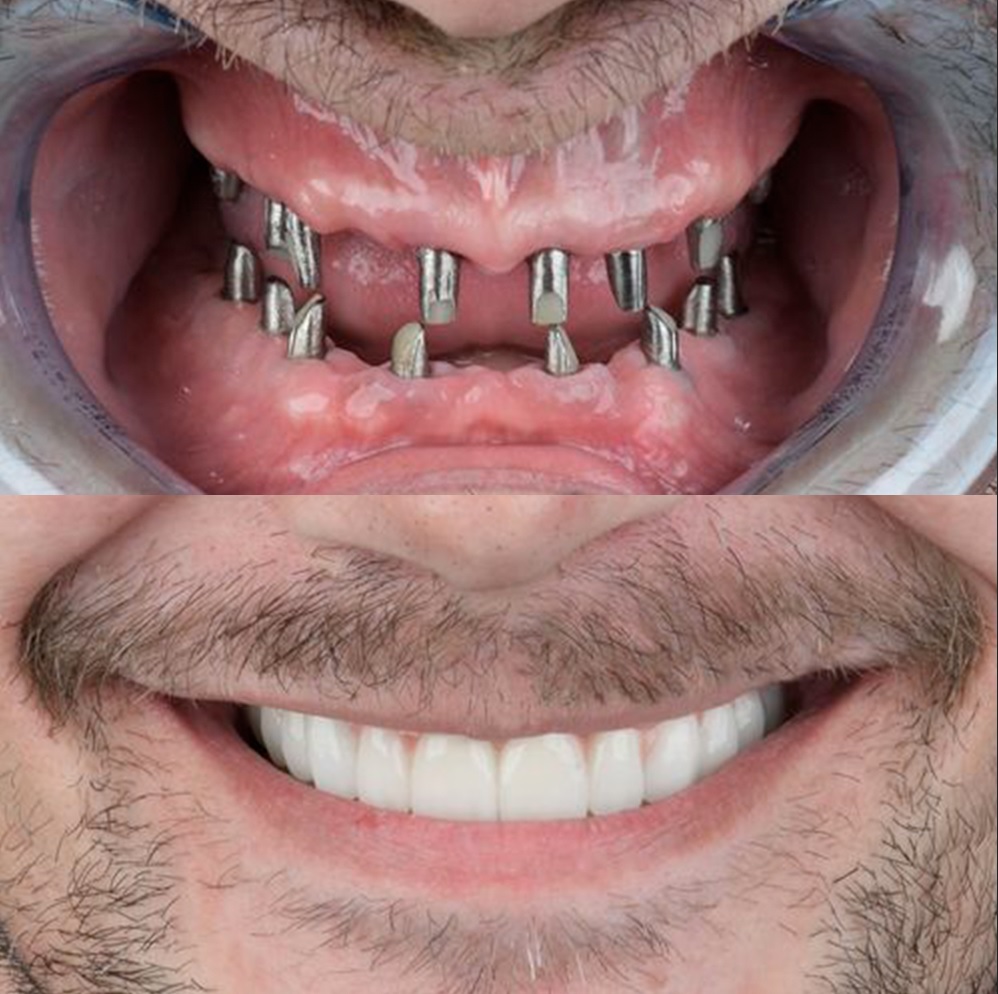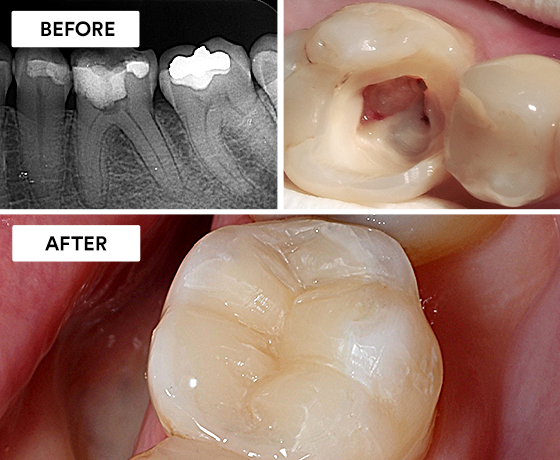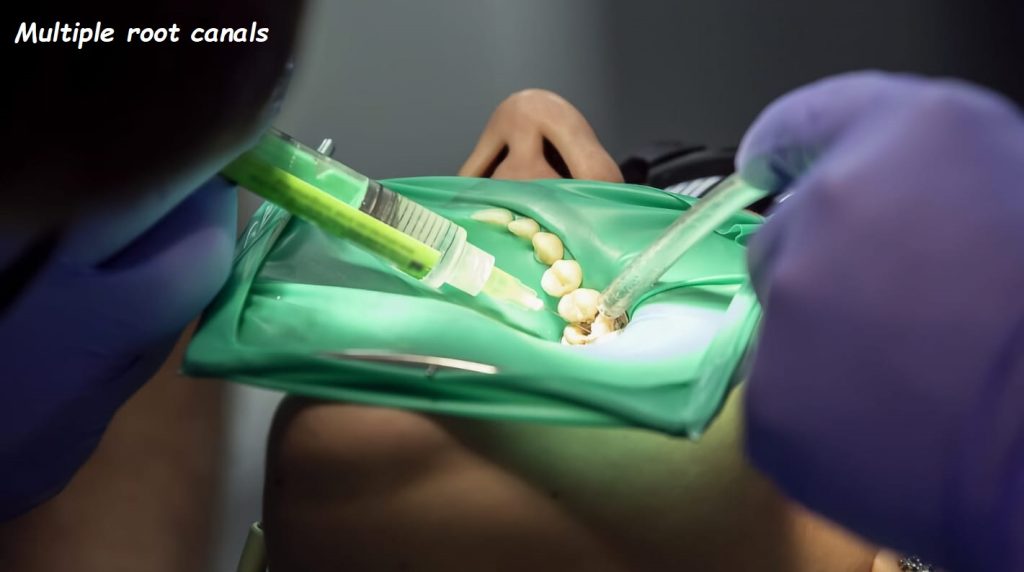how long does root canal retreatment take

Ever found yourself wondering how long a root canal retreatment takes? If so, you’re not alone. Many people who need this procedure are curious about the timeline. Let’s break it down and explore all aspects, from what it is to the factors that influence its duration.
What is Root Canal Retreatment?
Root canal retreatment is a dental procedure performed to address issues with a previous root canal treatment. It’s necessary when the initial treatment didn’t heal properly or complications arise. This retreatment involves removing the original filling, cleaning the root canals again, and refilling them.
Why Might You Need Root Canal Retreatment?
Sometimes, despite the best efforts, a root canal treatment can fail. This failure can be due to several reasons:
- Incomplete Cleaning: The initial procedure might not have cleaned the canals thoroughly.
- New Decay: New cavities can develop and cause infection.
- Cracked Tooth: A crack or fracture in the tooth can lead to new infections.
- Delayed Healing: The tooth might not have healed as expected.
The Importance of Root Canal Retreatment
Having a successful root canal retreatment is crucial for maintaining your oral health. Ignoring a failing root canal can lead to severe pain, abscess formation, and even tooth loss. Retreatment aims to save the tooth and restore its functionality.
Factors Influencing the Duration of Root Canal Retreatment
- Tooth Location: Front teeth usually have one canal, while molars have multiple canals. The more canals, the longer the procedure.
- Canal Complexity: Some teeth have complex canal structures, making them harder to clean and fill.
- Infection Severity: Severe infections might require more time to clean and disinfect the canals thoroughly.
- Previous Treatment Quality: If the original root canal treatment was poorly done, retreatment might take longer.
- Dentist Expertise: An experienced endodontist can perform the procedure more efficiently.
The Root Canal Retreatment Process
1. Diagnosis and Planning
The first step involves diagnosing the problem. Your dentist will take X-rays and possibly use other imaging techniques to assess the condition of the tooth and the previous root canal work. This phase is crucial for planning the retreatment.
2. Anesthesia
Before starting the procedure, local anesthesia is administered to ensure you don’t feel any pain. The level of anesthesia depends on the complexity of the case and your pain threshold.
3. Accessing the Root Canal
The dentist will remove the existing filling material from the tooth. This step is essential for accessing the root canals.
4. Cleaning and Shaping the Canals
Using specialized tools, the dentist cleans the canals thoroughly, removing any remaining debris or infection. This step might take longer if the canals are complex or the infection is severe.
5. Disinfecting the Canals
Once cleaned, the canals are disinfected to eliminate any remaining bacteria. This process ensures that the tooth is free from infection before refilling.
6. Filling the Canals
After disinfection, the canals are filled with a new biocompatible material. This step seals the canals to prevent future infections.
7. Sealing the Tooth
Finally, the tooth is sealed with a temporary or permanent filling. A crown might be placed later to restore the tooth’s functionality and appearance.
Post-Procedure Care
After the retreatment, you might experience some discomfort or swelling. Here are some tips for a smooth recovery:
- Pain Management: Over-the-counter pain relievers can help manage any pain.
- Oral Hygiene: Maintain good oral hygiene by brushing and flossing regularly.
- Diet: Avoid hard or chewy foods that might irritate the treated tooth.
- Follow-Up Visits: Attend all follow-up appointments to ensure proper healing.
Recovery Timeline
The recovery timeline varies from person to person. Generally, you can expect:
- Immediate Aftercare: Mild discomfort and swelling for a few days.
- First Week: Gradual improvement in symptoms.
- Two to Three Weeks: Most symptoms should resolve, and you can resume normal activities.
- One Month and Beyond: Full healing and restoration of the tooth’s functionality.
Possible Complications
While root canal retreatment is generally successful, complications can arise, such as:
- Persistent Infection: Sometimes, the infection might persist, requiring further treatment.
- Tooth Fracture: The tooth might fracture during or after the procedure.
- Pain: Some patients experience prolonged pain or sensitivity.
Comparing Root Canal Retreatment with Alternatives
1. Tooth Extraction
In some cases, tooth extraction might be considered instead of retreatment. While extraction removes the problematic tooth, it requires further procedures like implants or bridges to replace the missing tooth.
2. Apicoectomy
An apicoectomy is a surgical procedure to remove the tip of the root and surrounding infected tissue. It’s often used when retreatment is not feasible.
3. Dental Implants
If the tooth cannot be saved, a dental implant is a popular alternative. It involves placing a titanium post in the jawbone and attaching a crown to replace the missing tooth.
Cost of Root Canal Retreatment
The cost of root canal retreatment varies based on several factors:
- Location: Dental costs can vary significantly by region.
- Tooth Type: Molars typically cost more to treat than front teeth.
- Complexity: More complex cases might require additional procedures, increasing the cost.
- Insurance Coverage: Check with your insurance provider to see if retreatment is covered.
Preventing the Need for Retreatment
To reduce the chances of needing a root canal retreatment in the future, follow these tips:
- Regular Dental Checkups: Visit your dentist regularly for checkups and cleanings.
- Good Oral Hygiene: Brush and floss daily to maintain oral health.
- Avoid Hard Foods: Be cautious with hard foods that can crack your teeth.
- Address Issues Promptly: If you notice any dental issues, seek prompt treatment.
Conclusion
Root canal retreatment is a crucial procedure for saving teeth that didn’t heal properly after initial treatment. The duration of the procedure varies based on several factors, including tooth location, canal complexity, infection severity, previous treatment quality, and the dentist’s expertise. By understanding the process and following proper aftercare, you can ensure a smooth recovery and maintain your oral health.
Have you ever had a root canal retreatment? How was your experience? Share your thoughts in the comments below!
Frequently Asked Questions
1. How long does a root canal retreatment procedure take?
The procedure typically takes between 1 to 2 hours, but complex cases might take longer.
2. Is root canal retreatment painful?
With proper anesthesia, you shouldn’t feel pain during the procedure. Some discomfort might be present afterward.
3. Can a root canal retreatment fail?
While rare, retreatment can fail, leading to the need for additional procedures like an apicoectomy or tooth extraction.
4. How long is the recovery period for root canal retreatment?
Most people recover within a few weeks, with symptoms improving gradually during this time.
5. How much does root canal retreatment cost?
Costs vary, but you can expect to pay between $800 to $2,000, depending on various factors. Check with your insurance for coverage details.
In-Depth Look at Root Canal Retreatment
Let’s dive deeper into specific aspects of root canal retreatment, providing a more comprehensive understanding of this dental procedure.
Detailed Steps of Root Canal Retreatment
Step 1: Diagnosis and Planning
The success of a root canal retreatment begins with accurate diagnosis and planning. This phase involves:
- X-Rays and Imaging: These are essential to assess the condition of the tooth and previous root canal work.
- Consultation: Your dentist or endodontist will discuss the findings and plan the retreatment accordingly.
Step 2: Anesthesia
Administering the right amount of anesthesia is crucial for patient comfort. Depending on the complexity of the procedure and your anxiety level, your dentist might use:
- Local Anesthesia: Numbs the specific area around the tooth.
- Sedation: For patients with severe anxiety, sedation can help relax during the procedure.
Step 3: Accessing the Root Canal
The dentist will create an opening to access the root canals. This step involves:
- Removing Old Filling Material: All existing filling material must be removed to clean the canals properly.
- Visual Inspection: The dentist will visually inspect the canals to identify any additional issues.
Step 4: Cleaning and Shaping the Canals
Cleaning and shaping the canals is a meticulous process that ensures all infected material is removed. This involves:
- Using Specialized Tools: Endodontists use small, flexible instruments to clean and shape the canals.
- Irrigation: A disinfecting solution is used to wash away debris and bacteria.
Step 5: Disinfecting the Canals
Disinfection is critical to prevent future infections. This step includes:
- Using Antimicrobial Solutions: These solutions help eliminate remaining bacteria.
- Sealing the Canals Temporarily: In some cases, the canals might be temporarily sealed with medication to treat the infection.
Step 6: Filling the Canals
Filling the canals is the final step before sealing the tooth. This involves:
- Using Biocompatible Materials: Gutta-percha is commonly used to fill the canals.
- Ensuring a Tight Seal: The canals must be tightly sealed to prevent bacteria from entering.
Step 7: Sealing the Tooth
Sealing the tooth restores its structure and function. This step includes:
- Temporary Filling: A temporary filling might be used initially.
- Permanent Restoration: A crown is often placed later to provide long-term protection and functionality.
Advanced Techniques in Root Canal Retreatment
Endodontists use advanced techniques and technologies to improve the success rate of root canal retreatment. These include:
1. Microscope-Assisted Endodontics
Using a dental microscope allows the endodontist to see the canals more clearly, ensuring thorough cleaning and filling.
2. Cone Beam Computed Tomography (CBCT)
CBCT provides 3D imaging, giving a detailed view of the tooth’s structure and any issues that might not be visible on traditional X-rays.
3. Laser-Assisted Endodontics
Lasers can be used to disinfect the canals more effectively, reducing the risk of infection.
Patient Experience During Root Canal Retreatment
Understanding what to expect can help alleviate anxiety. Here’s a step-by-step look at the patient experience:
Before the Procedure
- Consultation: Your dentist will explain the procedure and address any concerns.
- Pre-Procedure Instructions: You might receive specific instructions, such as eating a light meal beforehand.
During the Procedure
- Anesthesia Administration: You’ll receive anesthesia to ensure comfort.
- Procedure Duration: The procedure typically takes 1 to 2 hours. You can listen to music or an audiobook to pass the time.
After the Procedure
- Immediate Recovery: You’ll spend a short time in the office to ensure the anesthesia wears off safely.
- Post-Procedure Care: Follow the care instructions provided by your dentist to ensure proper healing.
Long-Term Care and Maintenance
After root canal retreatment, maintaining good oral hygiene is essential for the longevity of the treated tooth. Here are some tips:
Regular Dental Checkups
Visit your dentist regularly for checkups and cleanings. These visits help monitor the health of your teeth and catch any issues early.
Good Oral Hygiene Practices
- Brushing: Brush your teeth at least twice a day with fluoride toothpaste.
- Flossing: Floss daily to remove plaque and food particles between your teeth.
- Mouthwash: Use an antimicrobial mouthwash to reduce bacteria in your mouth.
Avoiding Hard Foods
Be cautious with hard foods that can crack your teeth. This is especially important for the treated tooth, which might be more susceptible to damage.
Alternatives to Root Canal Retreatment
In some cases, alternatives to root canal retreatment might be considered. These include:
Tooth Extraction
If the tooth cannot be saved, extraction might be the only option. This procedure involves removing the tooth and replacing it with a dental implant or bridge.
Apicoectomy
An apicoectomy is a surgical procedure that removes the tip of the root and surrounding infected tissue. It’s often used when retreatment is not feasible or has failed.
Comparing Costs: Root Canal Retreatment vs. Alternatives
Understanding the costs involved can help you make an informed decision. Here’s a comparison:
Root Canal Retreatment
- Average Cost: $800 to $2,000
- Insurance Coverage: Often covered partially or fully by dental insurance
- Long-Term Savings: Retreatment can save the tooth, potentially avoiding more costly procedures later.
Tooth Extraction and Dental Implant
- Average Cost of Extraction: $150 to $500
- Average Cost of Dental Implant: $3,000 to $4,500
- Insurance Coverage: Varies; implants are often not covered fully
Apicoectomy
- Average Cost: $1,000 to $2,000
- Insurance Coverage: Often covered partially or fully by dental insurance
Making the Decision: Root Canal Retreatment or Alternative
When deciding between root canal retreatment and alternatives, consider the following:
- Tooth Condition: The overall condition and importance of the tooth in your mouth.
- Cost: Your budget and insurance coverage.
- Dentist’s Recommendation: Trust your dentist’s expertise and advice.
Conclusion
Root canal retreatment is a vital procedure to save teeth that haven’t healed properly after initial treatment. By understanding the process, duration, and factors influencing the procedure, you can make informed decisions about your dental health. Remember to maintain good oral hygiene and attend regular dental checkups to prevent future issues.
Have you ever had a root canal retreatment? How was your experience? Share your thoughts in the comments below!
Frequently Asked Questions (Extended)
1. What happens if root canal retreatment fails?
If retreatment fails, options include an apicoectomy or tooth extraction followed by a dental implant.
2. How do I know if I need a root canal retreatment?
Symptoms like persistent pain, swelling, or a recurring abscess might indicate the need for retreatment. Consult your dentist for an accurate diagnosis.
3. Is it normal to feel pain after root canal retreatment?
Some discomfort is normal after the procedure, but severe pain should be reported to your dentist.
4. Can I eat immediately after root canal retreatment?
It’s best to wait until the anesthesia wears off before eating. Start with soft foods and avoid chewing on the treated tooth initially.
5. How can I prevent needing a root canal retreatment?
Maintain good oral hygiene, avoid hard foods that can crack your teeth, and attend regular dental checkups.
Resources and Further Reading
For more information on root canal retreatment, check out these resources:
- American Association of Endodontists (AAE)
- Mayo Clinic
- WebMD Dental Health
By understanding root canal retreatment and its importance, you can take proactive steps to maintain your dental health and prevent future complications. Whether you’re facing retreatment now or aiming to avoid it in the future, knowledge is your best tool.
There you have it, a comprehensive guide to understanding how long root canal retreatment takes and all the factors involved. If you have any more questions or need further details, feel free to ask!









